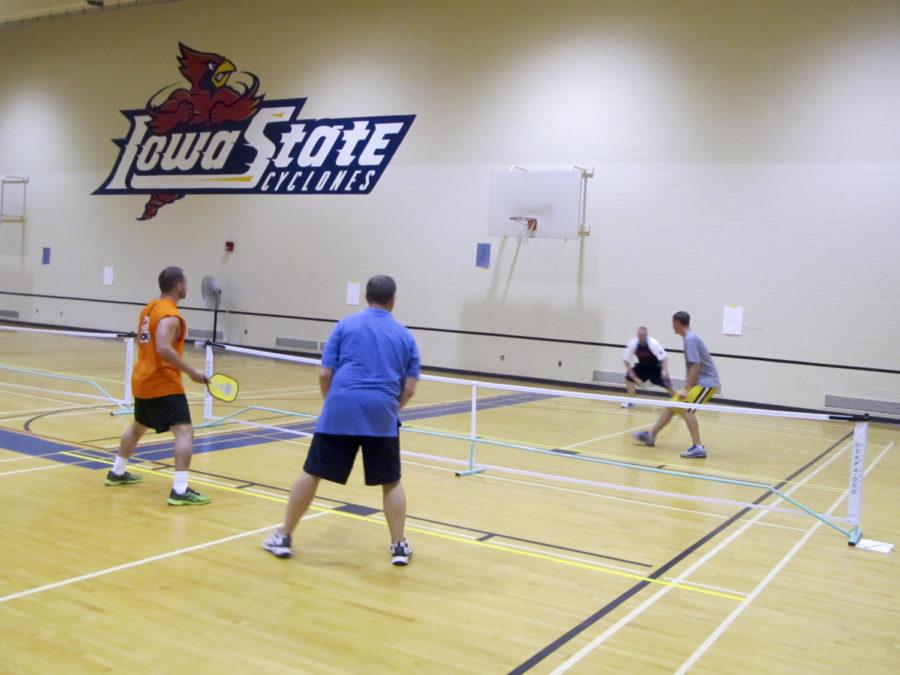IOWA GAMES: Pickleball makes Iowa Games debut
July 15, 2012
You won’t see it watching ESPN nor will you see it in the next issue of Sports Illustrated. Some may not have even heard of it before, but they could in the near future.
Pickleball appeared at the Iowa Games this year for the first time ever. Even despite a lower turnout than expected, the badminton takeoff proved its rapid growth by breaking attendance records on Sunday.
“I really can’t complain,” said Steve Stone, USAPA Ambassador for Central Iowa. “Thirty-something is a little low, but as it’s growing amongst the youngsters throughout the country and here in Iowa, this is a pretty darn good showing.”
Twenty-nine players met at the Forker building to see who would be the first Iowa Games pickleball champion. That was more than other events that had been running for 8 to 10 years, an Iowa Games record.
The rules are similar to badminton, with games played to 11 points. Players use a paddle to hit a plastic ball over the net with one main difference from badminton. A line called the “kitchen” marks an area 7 feet from the net where players are not allowed to volley and must hit the balls off the bounce.
Because of the no-volley zone, Stone says it makes it more of a finesse and strategic game than badminton and credits that to the high number of senior citizens who play.
“There’s not nearly as much space to cover,” Stone said.
In Iowa, there were just five or six locations to play a year and a half ago. The sport has been popular down south for years, and Stone said many Iowans who don’t live in Iowa year-round finally have a place to play.
“They’re snowbirds in the winter,” Stone said. “They’re down there, and they come back in the summer and wish there was some place to play.
Now, there are 20 locations to play, with six in Des Moines alone.
One of the people who made it out to Forker Sunday was Gary Kruse of Glenwood, Iowa.
Kruse has been playing the sport for two years and said he continues to play for a trio of reasons.
“Three things:” Kruse said, “the camaraderie of it, the exercise and the challenge. That’s really the three biggest things.”







